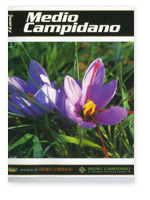Skip navigation bar and go to contents
Vivere la campagna
 Agricoltura
Agricoltura
 Ambiente
Ambiente
 Bilancio e Patrimonio
Bilancio e Patrimonio
 Consigliera di Parità
Consigliera di Parità
 Cultura
Cultura
 Formazione Professionale
Formazione Professionale
 Immigrazione/Emigrazione
Immigrazione/Emigrazione
 Innovazione Tecnologica
Innovazione Tecnologica
 Lavori pubblici e Viabilità
Lavori pubblici e Viabilità
 Lavoro
Lavoro
 Personale
Personale
 Pianificazione Territoriale
Pianificazione Territoriale
 Politiche giovanili
Politiche giovanili
 Politiche Sociali
Politiche Sociali
 Protezione civile
Protezione civile
 Pubblica Istruzione
Pubblica Istruzione
 Sport
Sport
 SUAP
SUAP
 Trasporti
Trasporti
 Turismo
Turismo
 URP
URP

n. 26/2009 -
Miningactivity in Sardinia dates back to the 4th millennium BC, when flint was the most suitable material for shaping cutting tools and weapons, such as the arrowheads found almost everywhere. In Nuraghic times, metal ore was mined to make daily-use tools but above all to create bronze statuettes, a rich collection of which is on display at the Cagliari National Archaeological Museum. The main mining districts were located in south-western portion Sardinia, where activity flourished during the Phoenician and Roman periods: indeed, in Roman times Sardinia was the third largest supplier of metals to the Empire after Spain and Brittany. But the true boom of mining activity occurred in the 19th century, in the wake of the IndustriaI Revolution, also thanks to a new law enabling the award of mining concessions to those having adequate financial means to exploit them. The mountains of Guspini and Arborea, rich in zinc and silver-Iead, and the territory of Gonnosfanadiga with its seams of molybdenum and tin became the focus of intense mining activity: Montevecchio in particular with more than 100 km of underground galleries was considered the most extensive mine in Italy. The mineraI ore was transported by rail to the coast (the remains of this conveyance system can still be seen at Piscinas) or towards the hinterland to San Gavino Monreale where one of the largest lead foundries (now abandoned) was built. Whole mining villages sprang up, as well as mine buildings and plants, from management offices to ore washeries, from schools to summer seaside camps for the miners' children. Half-way through the 20th century the activity of the last of these mines ground to a halt and the whole mining district fell into neglect and decay.
The area is scattered with imposing mining ruins, above all at Montevecchio, Ingurtosu, Naracauli Genn'e mari, Sibiri, Perd'e Pibera and Canali Serci. In recent years, the outstanding heritage value of these sites has come to be fully recognised, and a project is currently under way for the conservation of the most significant sites and buildings, which form a unique, fascinating historical and cultural heritage.